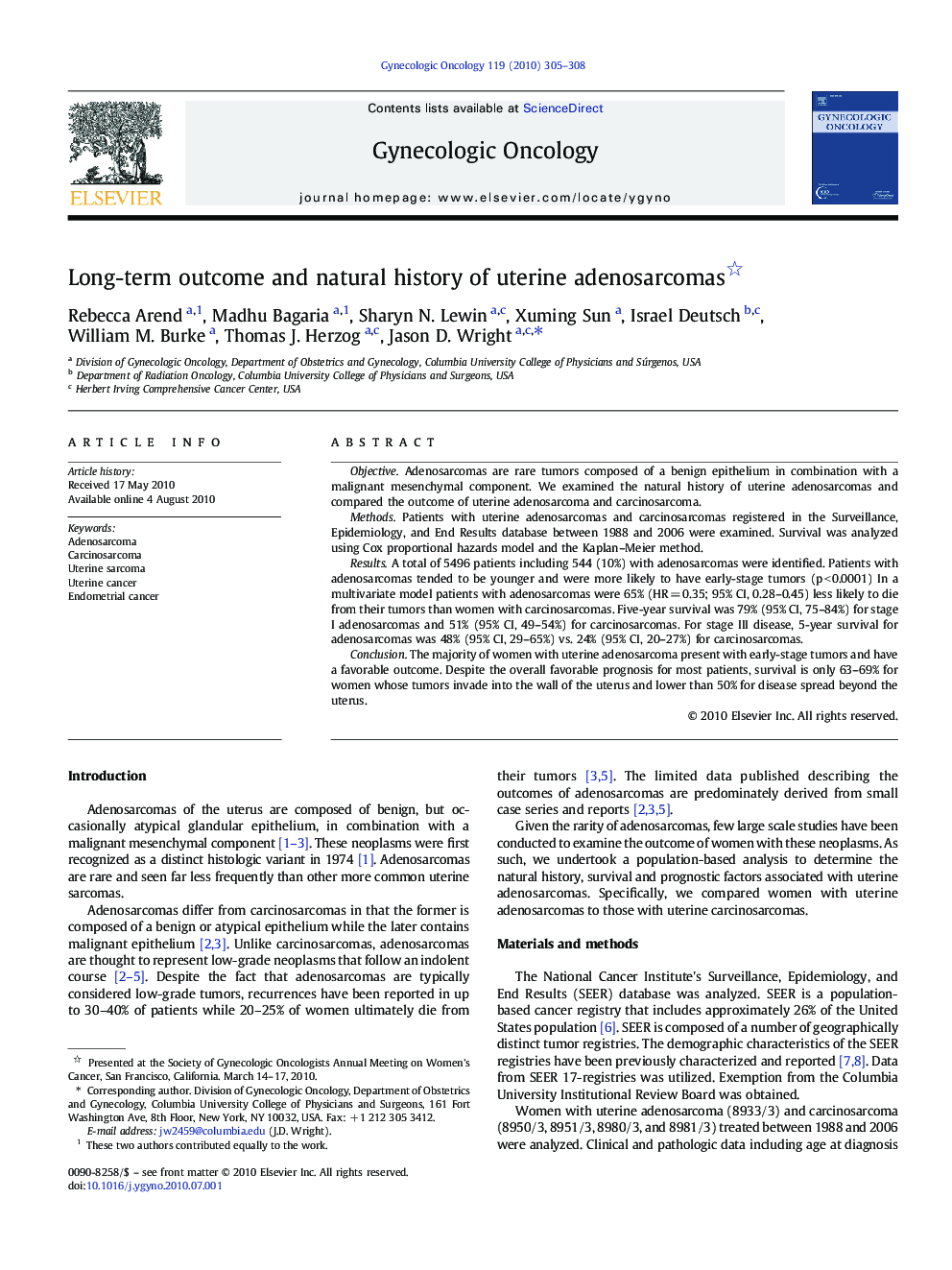| Article ID | Journal | Published Year | Pages | File Type |
|---|---|---|---|---|
| 3947335 | Gynecologic Oncology | 2010 | 4 Pages |
ObjectiveAdenosarcomas are rare tumors composed of a benign epithelium in combination with a malignant mesenchymal component. We examined the natural history of uterine adenosarcomas and compared the outcome of uterine adenosarcoma and carcinosarcoma.MethodsPatients with uterine adenosarcomas and carcinosarcomas registered in the Surveillance, Epidemiology, and End Results database between 1988 and 2006 were examined. Survival was analyzed using Cox proportional hazards model and the Kaplan–Meier method.ResultsA total of 5496 patients including 544 (10%) with adenosarcomas were identified. Patients with adenosarcomas tended to be younger and were more likely to have early-stage tumors (p < 0.0001) In a multivariate model patients with adenosarcomas were 65% (HR = 0.35; 95% CI, 0.28–0.45) less likely to die from their tumors than women with carcinosarcomas. Five-year survival was 79% (95% CI, 75–84%) for stage I adenosarcomas and 51% (95% CI, 49–54%) for carcinosarcomas. For stage III disease, 5-year survival for adenosarcomas was 48% (95% CI, 29–65%) vs. 24% (95% CI, 20–27%) for carcinosarcomas.ConclusionThe majority of women with uterine adenosarcoma present with early-stage tumors and have a favorable outcome. Despite the overall favorable prognosis for most patients, survival is only 63–69% for women whose tumors invade into the wall of the uterus and lower than 50% for disease spread beyond the uterus.
